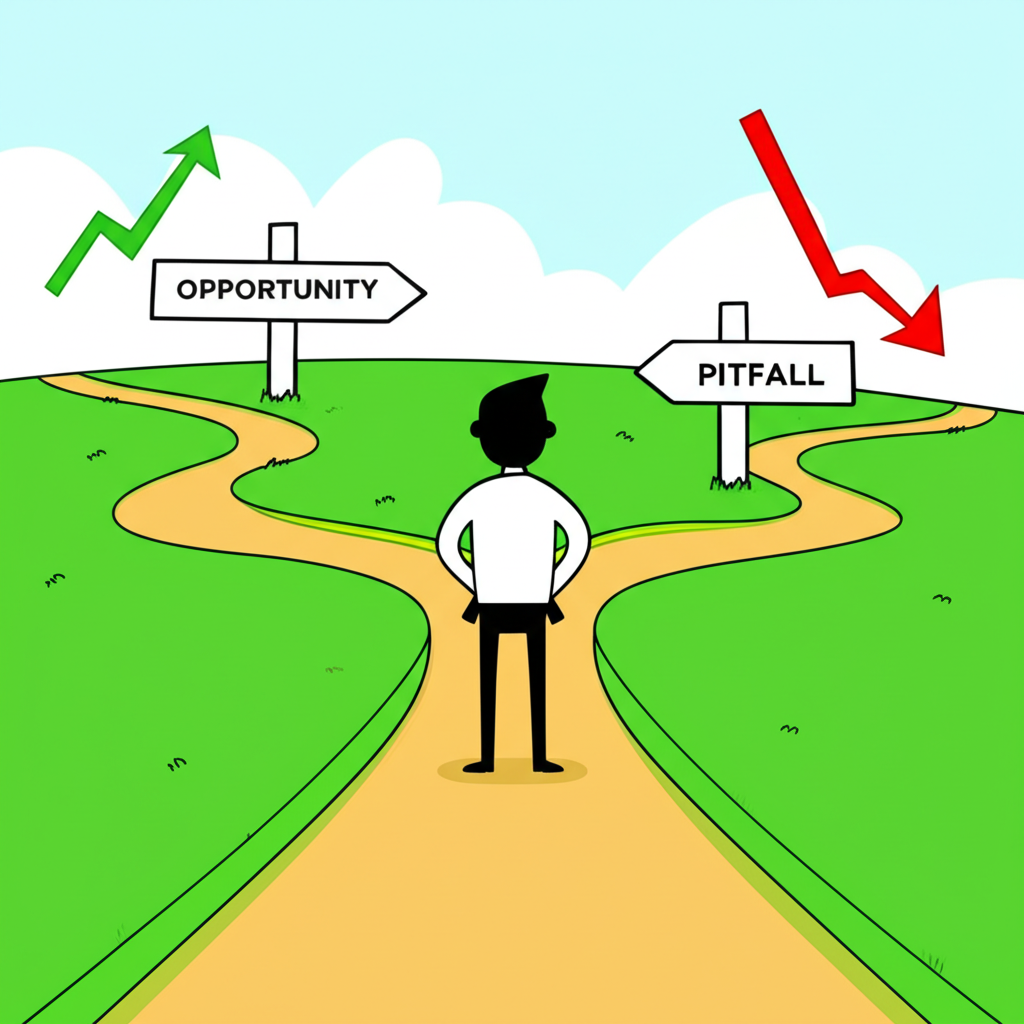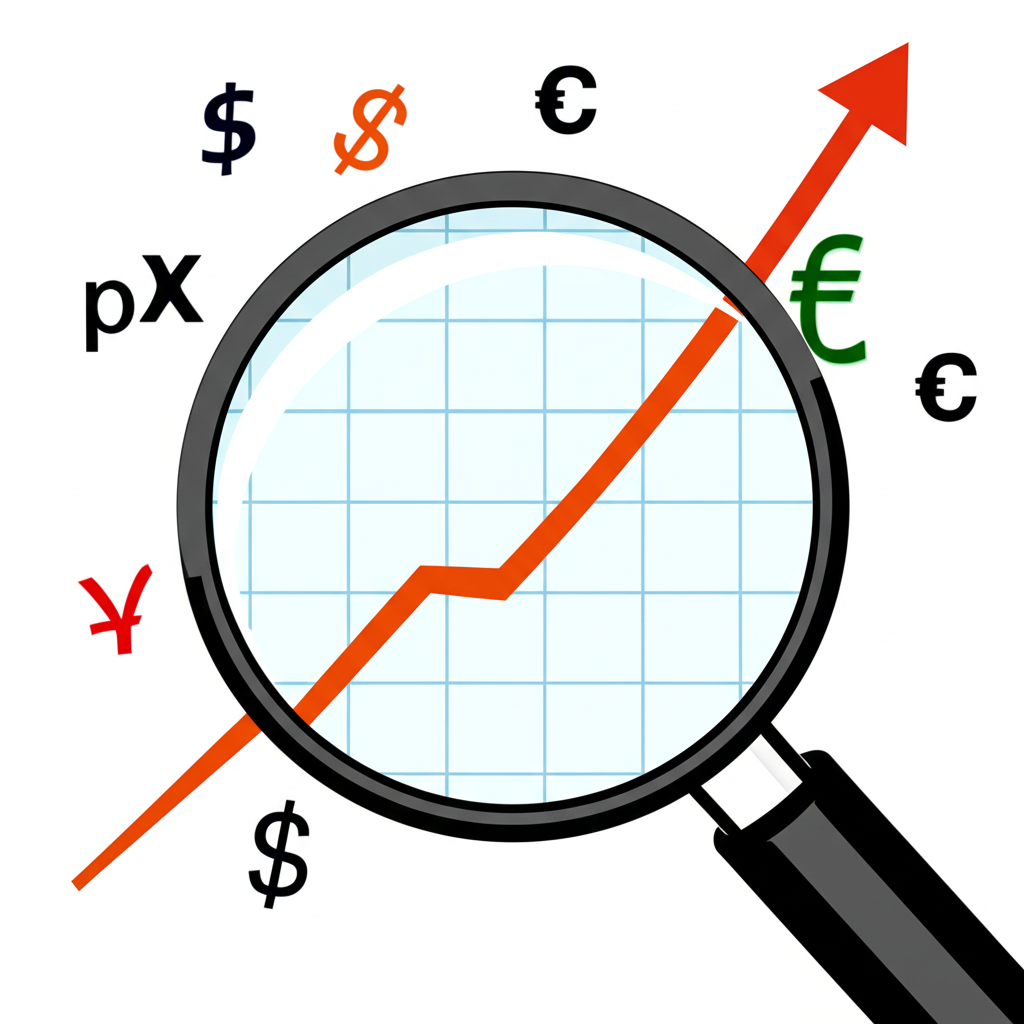Introduction: What Exactly is a Stock Market Rally?

In the fast-moving world of finance, knowing the language of the market isn’t just helpful—it’s essential. One term that frequently surfaces, yet often gets oversimplified, is the “stock market rally.” At its heart, a rally describes a phase where prices climb steadily across a broad index, a sector, or individual stocks after a period of stagnation or decline. It’s more than just a minor uptick; it’s a noticeable surge fueled by renewed investor interest, where confidence returns and buying activity picks up momentum.
For those navigating the markets, understanding rallies goes beyond academic curiosity. These movements can signal a genuine recovery, offer short-term profit chances, or—just as often—mask a fleeting rebound within a longer downturn. Recognizing the difference is crucial. This guide unpacks the mechanics of stock market rallies: what they are, how they form, what types exist, and most importantly, how to respond wisely. Whether you’re a seasoned trader or just starting out, this deep dive will sharpen your ability to interpret these dynamic market phases with clarity and confidence.
Key Characteristics and How to Identify a Market Rally

Spotting a rally in real time requires more than just noticing rising prices—it demands an eye for patterns and context. The most obvious sign is a swift and sustained climb in stock values, often affecting a wide swath of the market. Unlike the slow, steady climb of a long-term bull market, rallies tend to feel more urgent, with prices accelerating over days or weeks rather than months.
Volume often tells part of the story. A rally backed by surging trading activity usually reflects strong conviction—investors aren’t just dipping a toe in the water, they’re jumping in. But not all rallies come with high volume. Some begin quietly, as selling pressure simply fades. These so-called “relief rallies” may start on lighter volume but gain strength if optimism spreads. Equally telling is the shift in mood. When fear gives way to hope, and headlines start leaning positive, it’s often a precursor to upward movement. This psychological pivot can be self-reinforcing: as more investors buy in, prices rise, which fuels further confidence.
Timing also matters. While rallies are generally short-lived, their impact can vary—from a one-day bounce to a multi-week surge. To help spot them, traders often turn to technical tools. A breakout above a resistance level, for instance, can act as a trigger, drawing in algorithmic and momentum-driven buyers. Similarly, indicators like the Relative Strength Index (RSI) may show a bullish divergence, suggesting that downward momentum is weakening. Moving averages, especially the 50-day or 200-day, can also serve as signals—when prices cross above them, it may mark the start of a rally phase.
Rally vs. Trend: Understanding the Critical Difference
It’s easy to confuse a rally with a broader market trend, but doing so can lead to costly mistakes. A trend—up or down—reflects the market’s long-term direction, shaped by fundamentals like economic growth, corporate profits, and interest rates. A bull market, for example, isn’t just a series of rallies; it’s a prolonged period where each peak and trough is higher than the last, supported by solid economic data and investor confidence.
A rally, on the other hand, is a temporary upward movement that can happen within any trend. Think of it as a sprint within a marathon. In a bull market, a rally might follow a minor pullback, reaffirming the upward trajectory. But in a bear market, a rally can be deceptive—a brief spike amid an overall decline. Known colloquially as a “dead cat bounce,” it gives the illusion of recovery but lacks the fundamental backing to sustain gains.
The real test is sustainability. Trends are built on economic reality and can last years. Rallies, even powerful ones, are often sparked by short-term news, sentiment shifts, or technical factors. They can be sharp and dramatic, but without solid ground beneath them, they’re prone to reversal. Recognizing this difference helps investors avoid chasing false hope or mistaking noise for a meaningful shift in direction.
Exploring the Different Types of Stock Market Rallies

Not all rallies are created equal. While they all involve rising prices, their causes, duration, and implications differ widely. Understanding these variations can help investors make smarter decisions and avoid common pitfalls.
Bull Market Rally: A Surge Within an Upward Trend
When the broader market is already in an uptrend, a rally acts as a powerful reaffirmation of bullish sentiment. These rallies typically follow brief corrections or consolidation phases, where prices stabilize before breaking higher. Driven by strong fundamentals—such as robust earnings reports, rising consumer spending, or favorable Federal Reserve policy—they attract both retail and institutional investors looking to re-enter or increase exposure.
What sets bull market rallies apart is the underlying strength. They’re not just speculative moves; they’re often supported by improving economic data and rising corporate profits. Volume tends to increase as confidence grows, and market breadth—how many stocks are participating—widens. For long-term investors, these rallies are encouraging signs that the bull market remains intact.
Bear Market Rally (Dead Cat Bounce): Temporary Gains in a Downtrend
Perhaps the trickiest of all, a bear market rally emerges during a prolonged decline. Prices jump—sometimes sharply—but the rally lacks staying power. Without strong fundamentals to back it up, the gains quickly fade, and the market resumes its downward path. The term “dead cat bounce” captures this perfectly: even something lifeless will bounce if it falls from high enough.
These rallies often catch optimistic investors off guard. A burst of positive news, short-term technical rebounds, or a wave of short covering can spark a sudden rise. But if the economy is still weakening, earnings are deteriorating, or inflation remains high, the rally is unlikely to last. Traders who mistake it for a turnaround may end up buying high just before another leg down.
Santa Claus Rally: The Year-End Phenomenon
Each December, market watchers keep an eye out for the Santa Claus Rally—a seasonal uptick that historically occurs in the last five trading days of the year and the first two of January. While not guaranteed, it’s a pattern that has repeated often enough to earn its place in market lore.
Several factors contribute to this trend. Holiday cheer and investor optimism play a role. Institutions may “window dress” their portfolios, buying top performers to make their year-end reports look better. Lighter trading volumes mean smaller buying surges can have an outsized impact. And let’s not forget year-end bonuses—fresh cash flowing into 401(k)s and brokerage accounts can provide an extra boost.
Historical data supports its occurrence. According to the Stock Trader’s Almanac, the S&P 500 has delivered positive returns during this period in the majority of years since 1950, as noted by Investopedia (“Santa Claus Rally,” Investopedia). While it’s not a foolproof strategy, many traders view it as a favorable window for cautious positioning.
Short-Covering Rally: Fuelled by Short Sellers
When a stock starts to rise unexpectedly, it can trigger a chain reaction among short sellers—investors who bet on price declines. These traders, facing mounting losses, rush to buy back shares to close their positions. That sudden wave of buying can push prices even higher, creating a feedback loop known as a “short squeeze.”
Short-covering rallies are often explosive and volatile. They don’t necessarily reflect improving fundamentals but are driven by market mechanics and urgency. Stocks with high short interest—like those targeted during meme stock frenzies—are especially prone to these rallies. While they can generate quick profits, they’re also risky, as the rally may collapse as soon as short sellers finish covering.
Relief Rally: A Reaction to Oversold Conditions
After a sharp sell-off, markets sometimes snap back—not because of good news, but because they’ve fallen too far, too fast. This is a relief rally: a technical rebound from oversold conditions. Indicators like RSI dropping below 30 often signal this state, suggesting that selling pressure has exhausted itself.
Relief rallies can be quick and intense, offering traders a chance to buy at discounted levels. They’re common during periods of panic, such as sudden geopolitical shocks or economic scares. But unless the underlying concerns are resolved, the rally may fizzle out. Like bear market rallies, they offer opportunity but require caution—buying into a relief bounce without checking the fundamentals is like catching a falling knife.
What Drives a Stock Market Rally? Common Catalysts
Behind every rally is a catalyst—or a mix of them. Markets don’t move in a vacuum, and understanding what sparks upward momentum is key to separating noise from meaningful shifts.
**Macroeconomic data** often sets the stage. Strong GDP growth, lower unemployment, or cooling inflation can boost confidence across the board. When central banks signal rate cuts, borrowing becomes cheaper, businesses expand, and consumers spend more—all of which can fuel a rally. For example, the Federal Reserve’s pivot to a dovish stance in late 2023 helped spark a significant market rebound, supported by easing inflation pressures.
**Corporate performance** drives more targeted moves. A company beating earnings expectations, launching a breakthrough product, or announcing a major acquisition can send its stock—and sometimes its entire sector—soaring. When multiple large-cap firms report strong results in a single quarter, it can lift the broader market.
**Investor sentiment** acts as both fuel and feedback. When uncertainty fades—say, after a trade deal is reached or a political crisis resolves—investors who were on the sidelines may jump back in. This shift from fear to greed can accelerate price gains, especially if media narratives turn positive.
**Technical triggers** also play a role. A breakout above a key resistance level can activate algorithmic trading strategies and prompt technical traders to buy. Similarly, when a stock moves above its 200-day moving average, it’s often seen as a bullish signal, attracting more buyers.
And let’s not overlook **government policy**. Fiscal stimulus—like direct payments, tax cuts, or infrastructure spending—can inject liquidity into the economy and markets. During the pandemic, massive stimulus packages from the U.S. government helped stabilize markets and paved the way for strong rallies, even amid economic contraction. According to data from the Federal Reserve Bank of St. Louis, these measures provided critical support to both households and financial markets (“Gross Domestic Product,” Federal Reserve Bank of St. Louis).
Navigating Rallies: Opportunities and Risks for Investors
Rallies are double-edged swords. They offer profit potential but come with traps for the unwary. Success depends on staying disciplined, thinking critically, and avoiding emotional decisions.
Opportunities During a Rally:
- Short-Term Gains: Fast-moving rallies can reward timely entries, especially for active traders.
- Confirmation of Trends: In a bull market, a rally can validate long-held positions and reinforce confidence in the broader outlook.
- Portfolio Rebalancing: As certain assets surge, they may exceed target allocations. A rally is a chance to lock in gains and reinvest in undervalued areas.
- Spotting Market Leaders: Rallies often reveal which sectors or stocks are driving momentum—early signals for future opportunities.
Risks Associated with Rallies:
- Misreading the Signal: Jumping into a bear market rally can lead to losses when the downtrend resumes.
- Overbought Markets: Rapid gains can push valuations too high, increasing the risk of a sharp pullback.
- Sudden Reversals: Sentiment-driven rallies can collapse quickly if news turns negative.
- Fear of Missing Out (FOMO): Emotional trading during rallies often leads to buying at peaks and abandoning long-term strategies.
Strategic Considerations for Investors:
- Do Your Homework: Always assess fundamentals, not just price action.
- Know Your Risk Tolerance: Don’t let excitement override your comfort level with volatility.
- Avoid Chasing Price: Buying because “everyone else is” is a recipe for trouble.
- Use Dollar-Cost Averaging: For long-term investors, consistent investing smooths out market timing risks.
- Set Stop-Loss Orders: Protect your capital by defining exit points in advance.
Ultimately, rallies demand context. A sharp rise means little without understanding why it’s happening and whether it’s sustainable. By focusing on drivers, duration, and market environment, investors can make smarter choices and avoid costly mistakes.
| Feature | Market Rally | Sustained Market Trend (Bull/Bear) |
|---|---|---|
| Duration | Typically short-term (days to weeks) | Long-term (months to years) |
| Magnitude | Can be sharp and significant | Gradual, consistent, and pervasive |
| Underlying Driver | Short-term catalysts (news, technicals, sentiment shifts, short covering) | Fundamental economic and corporate health, long-term investor sentiment |
| Relationship to Trend | Can occur within any trend (upward or downward) | Defines the overall long-term direction of the market |
| Investor Implication | Potential for quick gains, but higher risk of reversal; requires careful analysis to avoid traps | Reflects long-term investment environment; guides strategic asset allocation |
Conclusion: Harnessing the Power of Understanding Market Rallies
Grasping what a stock market rally truly means is vital for any investor aiming to stay ahead of the curve. It’s not just about watching prices go up—it’s about understanding the forces behind the move. As we’ve seen, rallies can emerge in bull or bear markets, last days or weeks, and be driven by everything from earnings reports to seasonal patterns.
The key takeaway? Not every upward move is a sign of lasting recovery. Some rallies are healthy signs of strength; others are traps disguised as opportunity. By learning to identify the type of rally, its catalysts, and its place within the broader trend, investors can make more informed choices—capitalizing on real momentum while sidestepping false signals.
Markets will always be unpredictable, but knowledge reduces uncertainty. Whether you’re trading daily or building wealth over decades, a clear understanding of rallies empowers you to act with confidence, not impulse. Stay curious, stay analytical, and let insight—not emotion—guide your decisions.
Frequently Asked Questions About Stock Market Rallies
What is the main difference between a stock market rally and a bull market?
A stock market rally is a short-to-medium term period of significant price increases, often following a decline or stagnation. It can occur within any market environment. A bull market, on the other hand, is a sustained, long-term upward trend in the overall market, lasting months or even years, characterized by consistently rising prices, strong investor confidence, and positive economic fundamentals. A rally is a component or event within a broader market trend.
How long does a typical stock market rally last, and what factors influence its duration?
The duration of a typical stock market rally varies widely, from a few days to several weeks or even a couple of months. Its duration is influenced by the underlying catalysts:
- Strength of catalysts: Rallies driven by strong economic data or corporate earnings tend to last longer.
- Investor sentiment: A sustained shift in optimism can prolong a rally.
- Market conditions: Bear market rallies are often shorter and more volatile than rallies within a bull market.
- Trading volume: Higher volume can indicate stronger conviction and potentially a longer rally.
Can a market rally occur during a bear market, and if so, what is it called?
Yes, a market rally can absolutely occur during a bear market. When it does, it’s commonly referred to as a bear market rally or, more colloquially, a “dead cat bounce.” These rallies are temporary upward price movements within an ongoing downtrend, often misleading investors into believing a recovery is underway before the market resumes its decline.
What are the key indicators or signals that suggest a stock market rally might be starting?
Key indicators suggesting a rally might be starting include:
- Rapid price increases: A sudden and significant upward movement in stock prices or indices.
- Increased trading volume: Often, but not always, accompanied by higher buying volume.
- Positive news: Favorable economic reports, strong corporate earnings, or reduced geopolitical uncertainty.
- Technical breakouts: Prices breaking above key resistance levels or moving averages.
- Investor sentiment shift: A noticeable change from fear to optimism.
- Oversold conditions: A bounce after a prolonged or sharp decline, where technical indicators (like RSI) suggest assets were oversold.
What role does investor sentiment play in the formation and sustainability of a rally?
Investor sentiment plays a crucial role. A shift from pessimism or uncertainty to optimism can trigger a rally, as renewed confidence encourages buying. For a rally to be sustained, this positive sentiment often needs to be reinforced by fundamental improvements (e.g., strong economic data, corporate earnings). Without sustained positive sentiment and underlying fundamentals, a rally may quickly fizzle out, especially if it’s a bear market rally.
Is a “Santa Claus Rally” a guaranteed annual event, and what drives it?
No, the “Santa Claus Rally” is not a guaranteed annual event, but rather a historical tendency. It refers to a period of strong stock market performance typically observed during the last week of December and the first two trading days of January. It’s often driven by factors like holiday optimism, institutional window dressing (adjusting portfolios for year-end reports), lower trading volumes, and the investment of year-end bonuses. While it occurs more often than not, there’s no assurance it will happen every year.
What is the opposite of a rally in stock trading, and how does it manifest?
The direct opposite of a rally in stock trading is typically a decline, downturn, or sell-off. It manifests as a period of significant and often rapid price decreases across a stock, sector, or the broader market. These declines are usually driven by negative news, poor economic data, increased uncertainty, or widespread investor pessimism, leading to heavy selling pressure and falling asset values.
How should investors adjust their strategies during a market rally, considering both opportunities and risks?
Investors should adjust their strategies during a rally by:
- Exercising caution: Especially with bear market rallies, avoid impulsive buying driven by FOMO.
- Conducting due diligence: Focus on fundamentally strong companies, even if others are rallying.
- Considering profit-taking: For short-term traders, rallies can be an opportunity to lock in gains.
- Rebalancing portfolios: Trim positions that have become overweighted and reallocate to maintain desired asset allocation.
- Using risk management tools: Implement stop-loss orders to limit potential downsides if the rally reverses.
- Staying aligned with long-term goals: Don’t let short-term rallies derail your overall investment strategy.
Can specific sectors or industries experience a rally independently of the broader market?
Yes, absolutely. It’s common for specific sectors or industries to experience rallies independently of the broader market. This often happens due to sector-specific news, such as technological breakthroughs, favorable regulatory changes, strong earnings reports from key players within that industry, or increasing demand for their products/services. For example, a new drug approval might spark a rally in the pharmaceutical sector, even if the overall market is flat or declining. These are often referred to as “sector rotations” or “thematic rallies.”
